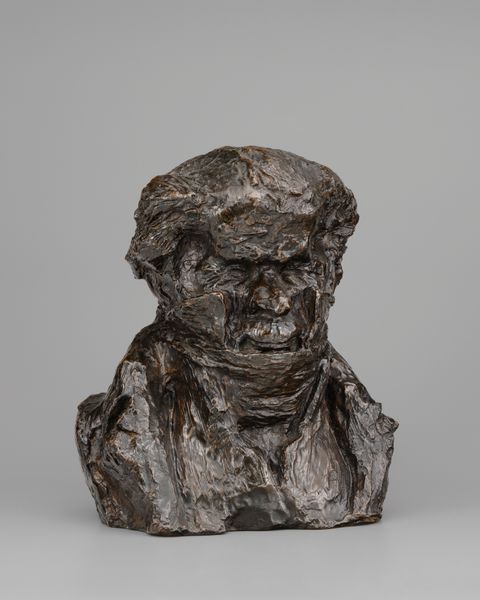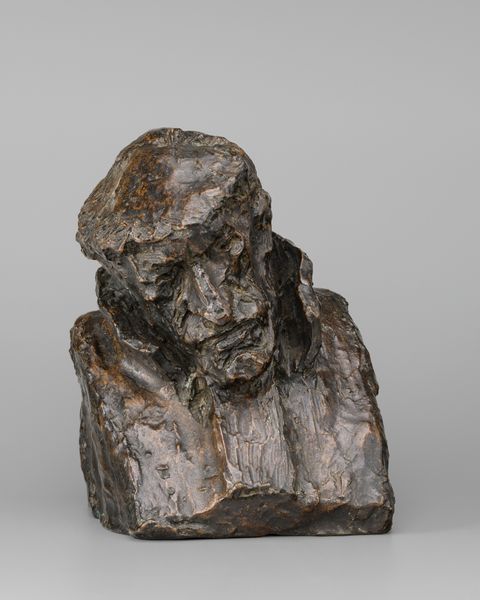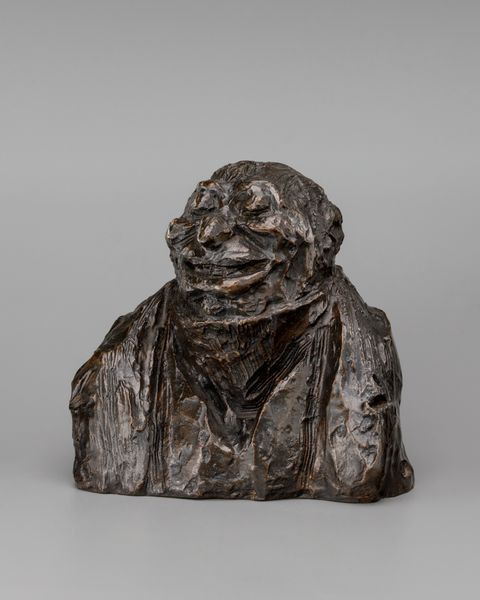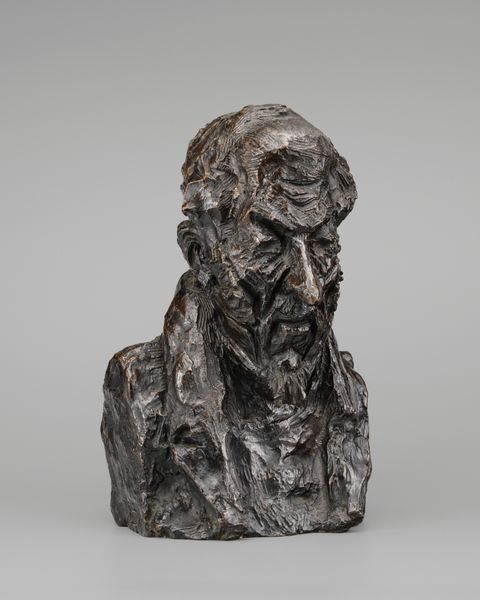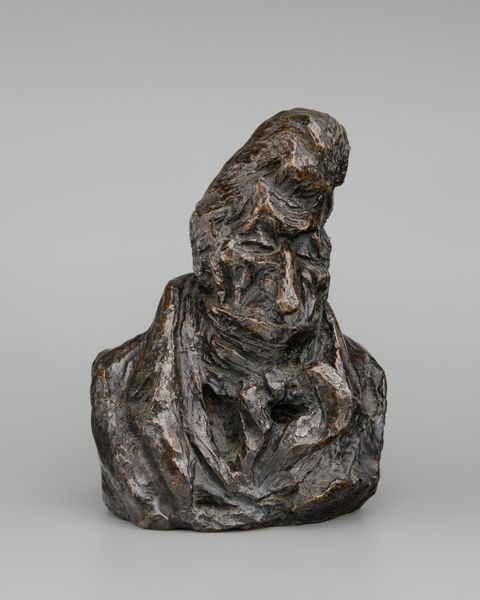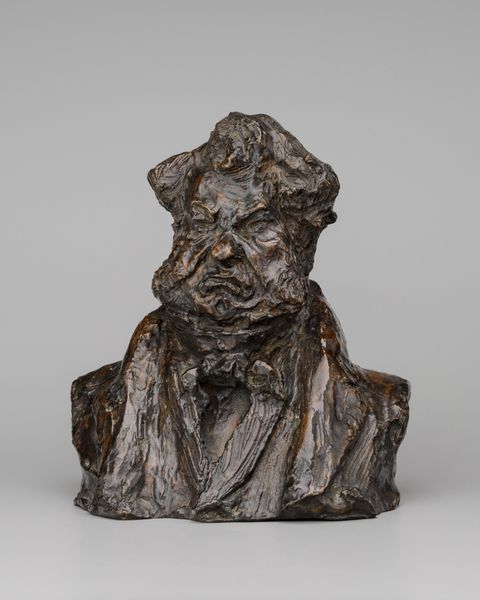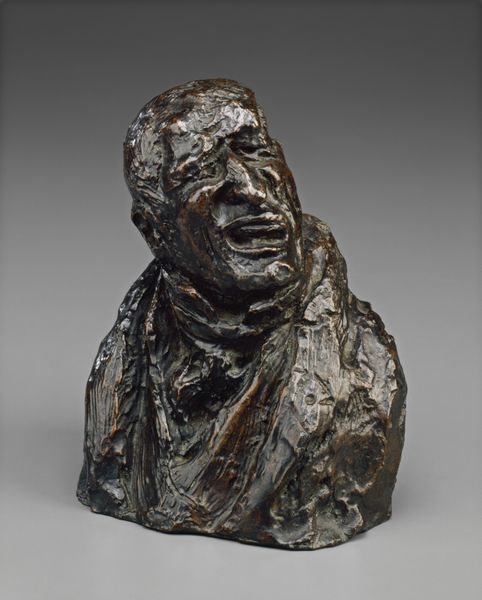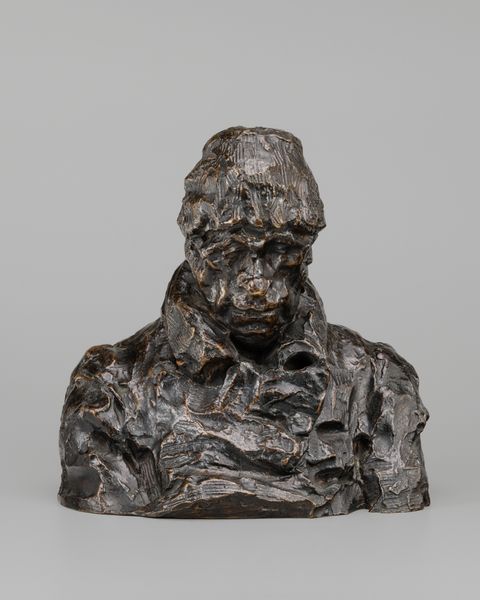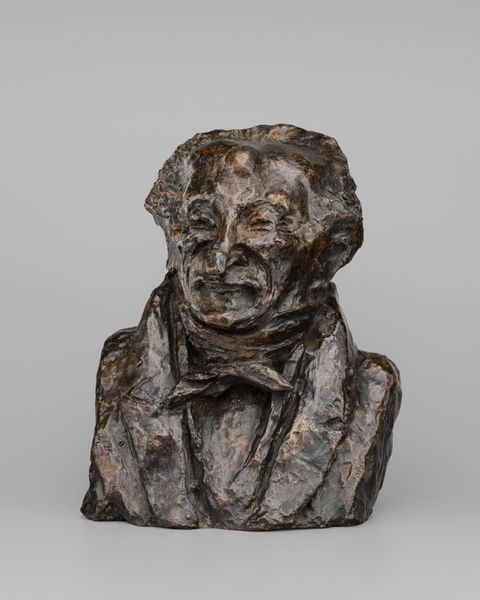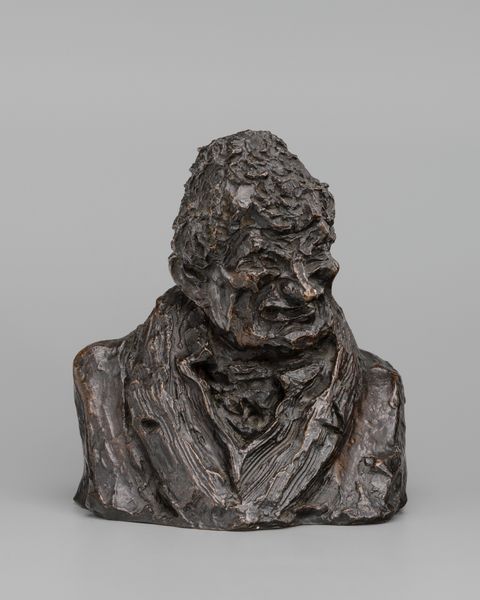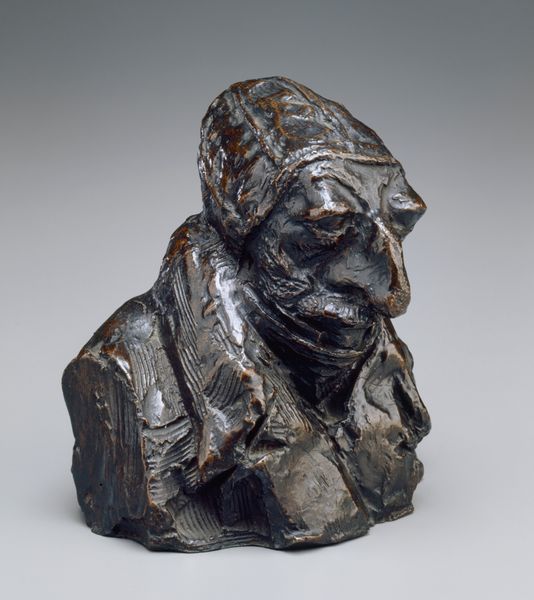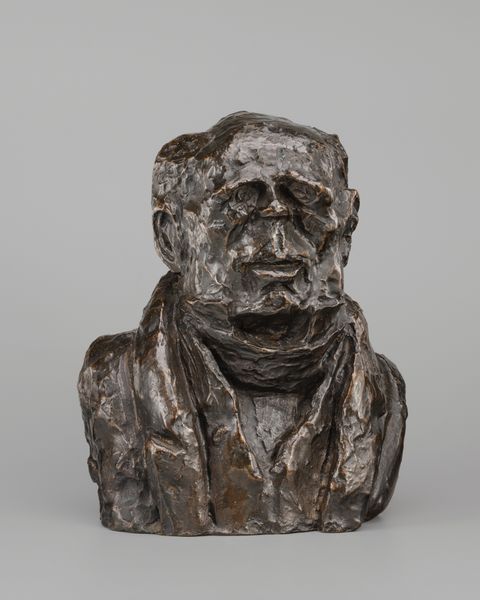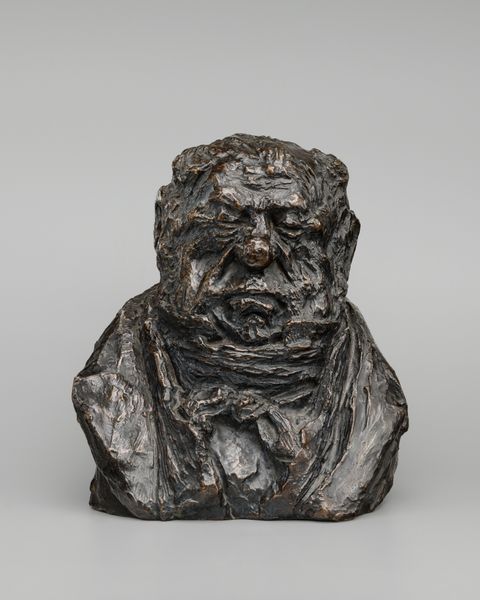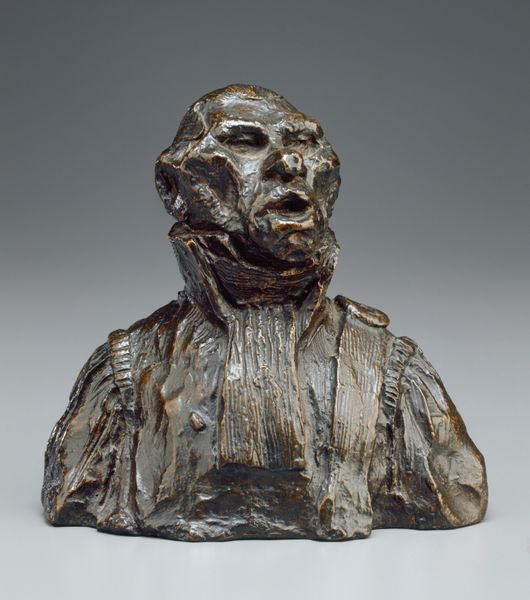
Dimensions: overall: 13 x 14.9 x 10.5 cm (5 1/8 x 5 7/8 x 4 1/8 in.)
Copyright: National Gallery of Art: CC0 1.0
Curator: Here we have a bronze sculpture titled "Dr. Clément-François-Victor-Gabriel Prunelle," attributed to Honoré Daumier, and dating roughly between 1832 and 1830. What's your immediate impression? Editor: I'm struck by the immediacy of it. The rough texture of the bronze captures a real, almost unidealized human presence. It’s as if Daumier quickly sculpted him right in front of us, capturing a moment in time. Curator: Precisely. Daumier was known for his social and political caricatures, and this sculpture reflects that sharp, critical eye. These busts were originally created in unbaked clay, meant to be viewed in private by Daumier and his close friends as a type of private social commentary on powerful members of French society, then they were cast in bronze many years later after his death. Editor: I see that. It's less about idealizing the doctor and more about capturing his essence. Note the downward cast of his eyes, the slight furrow of his brow; are we seeing hints of weariness or perhaps deep thought etched into his face? This posture and expression give off symbols that carry heavy cultural meaning. Curator: Absolutely. The medical profession, especially in the 19th century, held a certain social weight. This portrait serves as a fascinating reflection on the era’s power structures. It would certainly bring different thoughts and meaning to audiences in a different setting or culture. Editor: I wonder about Daumier’s choice of bronze. It grants a sense of permanence and gravitas, yet the sculpted clay manages to also provide softness. Perhaps Daumier wanted to suggest even influential figures can not hold an everlasting image and have real struggles of their own? Curator: That's insightful. Considering the historical context, Daumier often used art to critique societal norms. These artworks served to mock prominent political or social individuals within French culture, shaping and solidifying opinions within the general public. The materiality and texture work together to achieve his desired effect. Editor: I see a real duality within the artist. A sharp eye with subtle, beautiful commentary in his artwork, filled with symbols of the age. I feel this bust is very personal. Curator: Indeed. Daumier certainly offered us a provocative peek into French society, a statement for generations to come. Editor: Yes, and his work still prompts so many avenues of contemplation on portraiture and its underlying power.
Comments
No comments
Be the first to comment and join the conversation on the ultimate creative platform.
